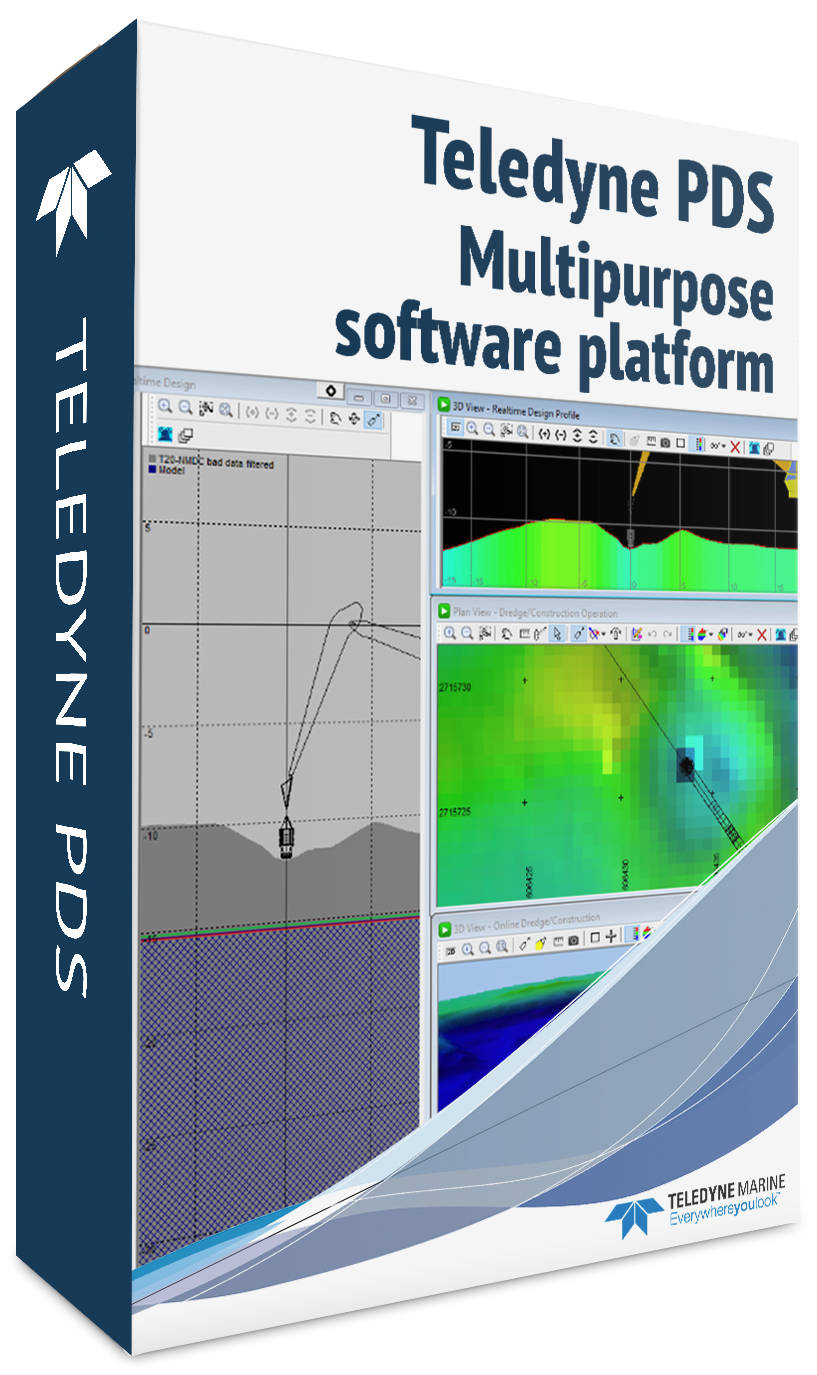
Installing an Offshore wind turbine is a complex, multi-phase process that requires extensive planning, precise engineering, and continuous monitoring.
Teledyne PDS serves as a central tool in this challenging process. It interfaces with a wide range of survey instruments, such as LiDAR, multibeam sonar, side-scan sonar, single-beam echosounders, and many others, as well as various peripheral sensors.
The
Teledyne PDS software suite provides specialized applications for every step of the process, from determining the most suitable location through pre-survey to monitoring the integrity of the electrical cables that carry energy to shore.

Pre- survey and survey
Before installation, a pre-survey is conducted to gather essential information about the seabed, water depth, and environmental conditions, determining the most suitable Offshore wind turbine location. Building on this, the survey phase provides more detailed, localized data, including high-resolution seabed mapping. In these initial phases the
Teledyne PDS Multibeam application can collect, process and deliver the needed survey data.

Offshore wind turbine installation
Teledyne PDS provides a full set of specialized monitoring applications for creating the foundation and placing the Offshore wind turbine.
Scour Protection Guidance
Scour protection involves placing materials around the base of the Offshore wind turbine to prevent erosion caused by water currents. On this crucial step
Teledyne PDS will help determining the optimal placement for the material.

Scour Monitoring
After scour protection measures are implemented, ongoing monitoring is necessary to ensure their effectiveness. The PDS Multibem app will again collect, process and deliver data for the regular inspections and surveys necessary to detect any signs of erosion or damage to the scour protection materials.

Cable Lay Monitoring
The
Teledyne PDS Cable lay monitoring application ensures that the cables are correctly laid on the seabed, avoiding obstacles and minimizing environmental impact.
Cable Trenching Monitoring
In some cases, cables are buried in trenches on the seabed to provide additional protection. The PDS Cable trenching monitoring application helps the operator overseeing the excavation process to ensure that the trenches are dug to the correct depth and that the cables are securely buried.
Cable Detection
After the cables are laid and buried, Teledyne Marine provides an industry unique capability for cable detection verifying location and depth with
Teledyne TSS Hydropact supported by Teledyne PDS.

